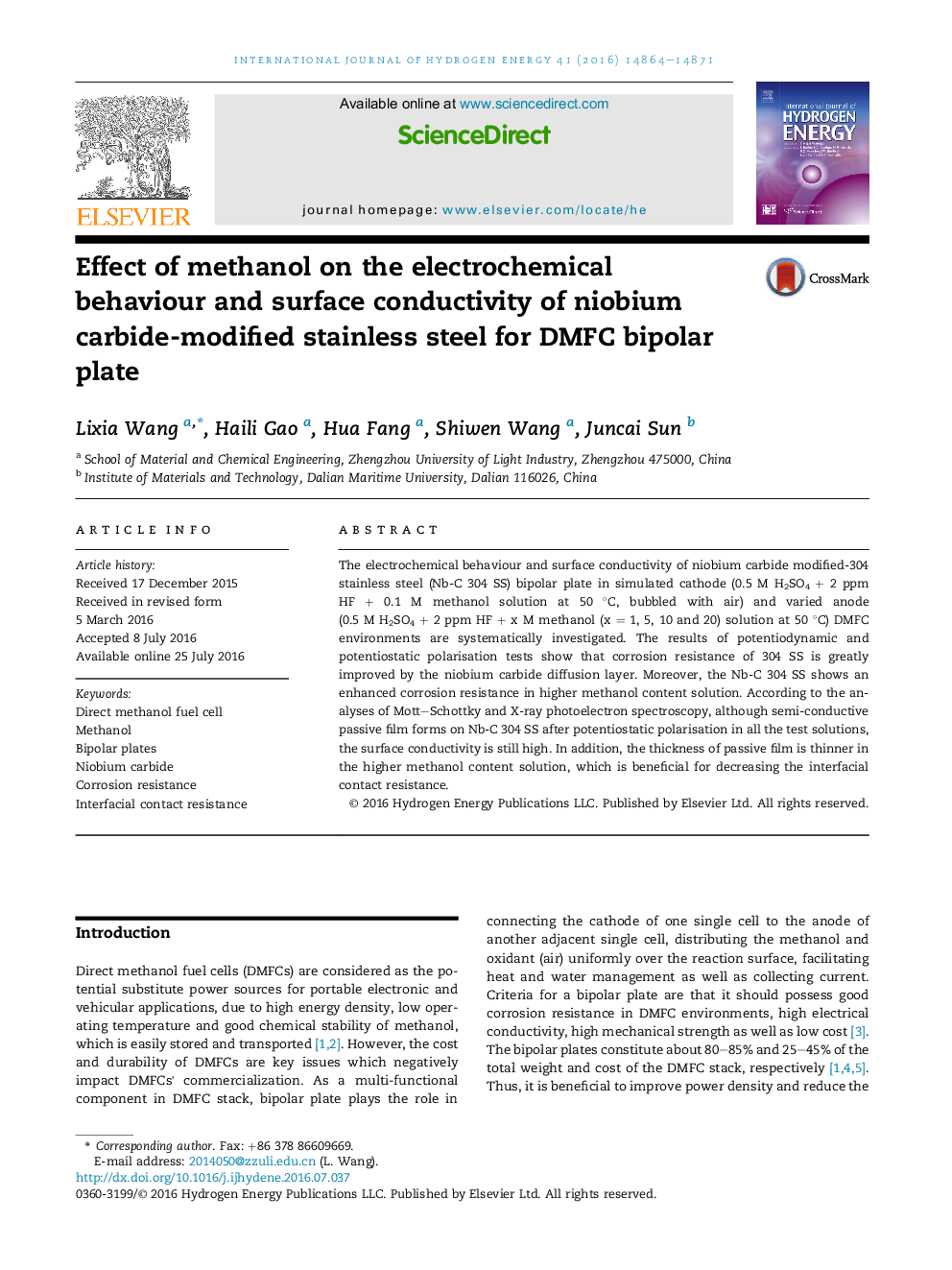| Article ID | Journal | Published Year | Pages | File Type |
|---|---|---|---|---|
| 1269364 | International Journal of Hydrogen Energy | 2016 | 8 Pages |
•Electrochemical behaviour of Nb-C 304 SS is firstly investigated in DMFC environments.•The niobium carbide layer shows excellent corrosion resistance.•The methanol retards the corrosion rate of Nb-C 304 SS in DMFC environments.•Passive film formed on Nb-C 304 SS shows n-type semi-conductor behaviour.•The surface conductivity of Nb-C 304 SS increases with the increasing of methanol concentration.
The electrochemical behaviour and surface conductivity of niobium carbide modified-304 stainless steel (Nb-C 304 SS) bipolar plate in simulated cathode (0.5 M H2SO4 + 2 ppm HF + 0.1 M methanol solution at 50 °C, bubbled with air) and varied anode (0.5 M H2SO4 + 2 ppm HF + x M methanol (x = 1, 5, 10 and 20) solution at 50 °C) DMFC environments are systematically investigated. The results of potentiodynamic and potentiostatic polarisation tests show that corrosion resistance of 304 SS is greatly improved by the niobium carbide diffusion layer. Moreover, the Nb-C 304 SS shows an enhanced corrosion resistance in higher methanol content solution. According to the analyses of Mott–Schottky and X-ray photoelectron spectroscopy, although semi-conductive passive film forms on Nb-C 304 SS after potentiostatic polarisation in all the test solutions, the surface conductivity is still high. In addition, the thickness of passive film is thinner in the higher methanol content solution, which is beneficial for decreasing the interfacial contact resistance.
